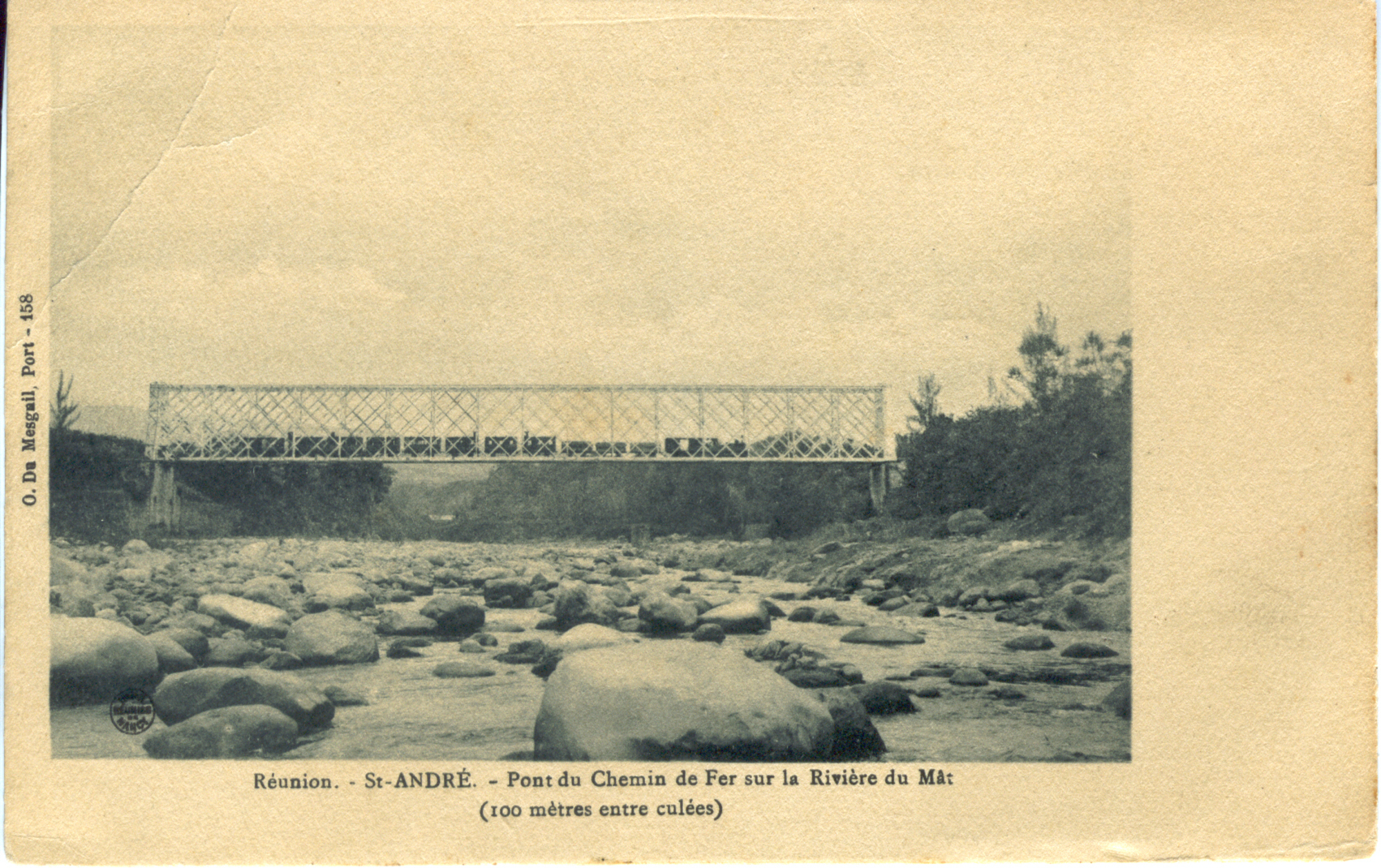
- Home
- Archaeology on Reunion Island
- Sites
- Saint-André
- Belzor arch
In 2016, some parts of the Belzor arch in Saint-André, built between 1879 and 1880, were located during field walking surveys. Rediscovered on a Réunion railway exploratory mission, these remains are among the oldest railway works still visible today.
The Belzor arch in Saint-André: a history
In 1882, Saint-André, a district of over 5,300 hectares and one of the most important in terms of the sugar industry, had several sugar refineries, including Bois Rouge and Ravine Creuse.
On 11 February 1882, the Saint Denis to Saint-Benoît railway was opened. After talking about the studies and the different stages in the railway’s construction, the governor Pierre Etienne Cuinier ended his speech with the words: "And now, unleash the steam! May she spread the good news of the railway’s arrival to every corner of the island". After his speech, the inaugural train left Saint-Denis station for Saint-Benoît. "We have arrived at the wonderful bridge over the River Mât. After crossing it, the train will stop and passengers are invited to admire this colossal feat. This is a sheet metal bridge, one hundred metres across, one of the most beautiful in existence. (…) This is an opportunity to recall the name of Mr. Grivaux, who, invited by the Compagnie du Creusot to realise these admirable works, saw them through to a successful end." (Thomy Lahuppe, Album de la Réunion, Roussin, 1883).
Field walking surveys
Walking across the town of Saint-André, between the former train station and the River Mât, it is easy to follow the tracks, with help from a map printed in 1950.
The remains of the former bridge abutment on the River Mât are still visible on the Chemin Canal Moreau. The metal deck of the former railway bridge was supported by an arch built to level it up to the opposite bank. This arch, now known as the Belzor arch, was the work of the Cie du Chemin de fer et du Port de la Réunion (C.P.R.). Four metres wide and high, the arch is designed to let the Chemin Canal Moreau run underneath the tracks.
Associated media
Open Media Library

Railway bridge over the Rivière du Mât (Saint-André, Arche de Belzor)

Railway bridge over the Rivière du Mât (Saint-André, Arche de Belzor)

Railway bridge over the Rivière du Mât (Saint-André, Arche de Belzor)

Entrance to the railway bridge over the Rivière du Mât (Saint-André, Arche de Belzor)

Left abutment of the railway bridge over the Rivière du Mât (Saint-André, Arche de Belzor)

